Long-Term Strategy: Adapting Email Cadence to Seasonal Trends Or Customer Lifecycle
In the dynamic world of email marketing, adapting to seasonal trends and customer lifecycle stages is crucial. We’ve gathered insights from marketing directors to CEOs, sharing their strategies and outcomes. From maximizing engagement with seasonal timing to crafting an opt-in strategy for holiday email campaigns, discover seventeen expert tips on fine-tuning your email cadence.
- Maximize Engagement With Seasonal Timing
- Ease Into Holiday Email Frequency
- Seasonal Interactive Elements Boost Engagement
- Lifecycle Stages Determine Email Content
- Bell Curve Strategy for Lifecycle Email Cadence
- Align Emails With Seasonal Travel Trends
- Seasonal and Lifecycle Email Frequency Adaptation
- Digital Signage Content Strategy for Holidays
- Subscription Renewal Email Strategy
- Email Cadence Reflects Market and Season
- Analytics Guide Holiday Email Adjustments
- Rental Revenue Boosted by Adaptive Emails
- Seasonal Content Calendar Drives Engagement
- Holiday Gaming Guides Curate Experiences
- Segmented Emails for Seasonal Storage Needs
- Tailored Promotions for Professional and Hobbyists
- Opt-In Strategy for Holiday Email Campaigns
Maximize Engagement With Seasonal Timing
When it comes to seasonal trends—it’s critical to understand the optimal days and times for sending emails to maximize engagement. For instance, research shows that emails sent mid-week—especially on Tuesday and Wednesday—tend to have higher open rates compared to those sent on weekends. Additionally, during holiday seasons or significant events, many people take time off, which may lead to longer response times, but you could send emails more frequently.
So, for example, if you’re anticipating a busy holiday shopping season, consider ramping up your email frequency in November to build anticipation, while scaling back during actual holidays like Christmas or New Year’s, when customers may be less responsive.
Another strategy that I can think of is to align your email campaigns with specific holidays or local events, tailoring content to reflect those occasions and ensuring that your audience feels relevant and engaged throughout the year.
 Tristan Harris
Tristan Harris
Demand Generation Senior Marketing Manager, Thrive Digital Marketing Agency
Ease Into Holiday Email Frequency
Do it gradually. As email marketers, we often feel the urge to ramp up email sends during holidays and seasonal peaks. However, increasing frequency too suddenly can come off as spammy, so it’s better to ease into it. Before high-demand periods, I use targeted emails like purchase surveys and abandoned-cart reminders to boost engagement and ensure emails later don’t get marked as spam.
I recommend this approach not just during the holiday season but throughout the year. Rather than blasting generic promos to everyone, I identify specific customer segments interested in particular products and tailor messages to them. I also set up automated emails triggered by customer behaviors, like their browsing history or interactions with previous emails.
This strategy really pays off. Emails that directly relate to what customers care about prevent inbox overload and cut down on unsubscribes. For example, using triggered emails based on user behavior has resulted in significantly higher conversion rates. In my experience, these can drive much higher conversion responses compared to traditional batch-and-blast methods.
 Patrick Beltran
Patrick Beltran
Marketing Director, Ardoz Digital
Seasonal Interactive Elements Boost Engagement
I adapt my email cadence by aligning interactive elements with the season’s storytelling. For instance, during the holidays, I incorporate festive visuals and interactive games into my emails. These visuals not only captivate the audience but also incite curiosity, prompting them to explore more.
At different stages of the customer lifecycle, the focus changes. For new subscribers, I use welcome emails with interactive tutorials or quizzes to engage them. As they move forward, I switch to personalized product recommendations and special offer alerts.
An example of this adaptive strategy’s success was our Christmas campaign. I included an interactive advent calendar in the emails, revealing daily deals or exclusive content. This resulted in a 20% rise in open rates and a considerable increase in customer engagement.
 Tim Hanson
Tim Hanson
Cco, PenFriend
Lifecycle Stages Determine Email Content
Our email marketing is designed to fit seamlessly into the different stages of the customer lifecycle. We craft our content and CTAs to resonate with a variety of user personas. During big sales events or when a customer’s subscription is up for renewal, we steadily increase the frequency of our emails based on the number of phone conversations we’ve had. This way, we can gently remind customers without being overbearing.
For our existing customers, emails focus on reminding them to use our latest features, troubleshoot any issues, and take advantage of helpful resources we’ve made available. These typically come as monthly updates around announcements and reminders. Customers who engage more with our resources will receive more frequent emails packed with guides, blogs, and online sessions.
 Rob Clegg
Rob Clegg
Senior Content Manager, Exclaimer
Bell Curve Strategy for Lifecycle Email Cadence
We take a very responsive approach to email cadence, and it fluctuates depending on the specific stage a prospect is in within their lifecycle—this is based on engagement and intent signals.
The broad pattern is that of a bell curve—at the beginning, we keep the email cadence quite low. While it’s important at this stage to keep in contact with the prospect, it’s also important not to overwhelm them with information. Remember, before they inquired, they received no emails from you—jumping straight to one every day is quite a change. We may even avoid sending sales emails of any kind right at the beginning, depending on the type of inquiry they placed.
Then we increase the rate of communication to a consistent level. They will receive a mixture of both sales and informational communication. The cadence here is less adapted—we have tested the rate of communication in this middle phase on a variety of leads and therefore deliver a fairly uniform approach.
However, if a prospect triggers one of a variety of engagement triggers, they are deemed to be a potential for conversion. They are then moved into a segment that receives a shorter burst of high-intent email content. This is focused around special offers and other sales-related triggers, all with the intention of driving a conversion.
At this point, one of two things happens—if they convert, they are moved along again and will receive direct communication from our business development team. If they don’t, after a predefined period, they are moved back into the regular “middle segment,” and continue to receive periodic sales and informational communications.
This approach to email cadence allows us to achieve two things—firstly, it allows us to deliver a responsive and adaptive approach which leads to better results. Email marketing is certainly not a one-size-fits-all strategy, and the more you can adapt your execution to the prospect’s sentiment, the better the results will be.
Secondly, it allows us to balance the need for an adaptive approach with the time required to implement and deliver said approach. With a strategy like this, consistency is everything. Therefore, it’s very important that the approach you take is something that can be delivered with regularity and effectiveness.
 Alex Myers
Alex Myers
Head of Marketing, The SEO Works
Align Emails With Seasonal Travel Trends
Adapting our email cadence to align with seasonal trends and different stages of the customer lifecycle has been instrumental in driving engagement and conversions. For instance, during the peak travel season in summer, we increase the frequency of our emails, focusing on promotional offers, travel itineraries, and customer testimonials to capitalize on heightened interest. Conversely, during the off-season, we shift our strategy to build anticipation for future trips, sharing content like travel guides and behind-the-scenes looks at our tours.
The adaptive strategy was our campaign for the New Zealand winter season. Recognizing that travel declines during winter, we tailored our emails to emphasize the unique beauty of New Zealand’s winter landscapes and promoted special winter tours. This led to a significant increase in bookings during this period. Our approach not only maximized revenue during a typically slow season but also offered our customers the chance to explore a lesser-known side of New Zealand.
 Peter Hamdy
Peter Hamdy
Co-Founder and Managing Director, Auckland & Beyond Tours
Seasonal and Lifecycle Email Frequency Adaptation
Adapting email cadence to seasonal trends and different stages of the customer lifecycle is crucial for optimizing engagement and conversions in our service-software business for trades businesses. During peak seasons, such as spring and summer when home-improvement projects are in full swing, we increase the frequency of our emails to provide timely offers, tips, and reminders that align with the heightened demand.
Conversely, during slower periods, we scale back to avoid overwhelming our audience and instead focus on value-driven content, like educational resources and customer success stories. Additionally, we tailor our email cadence based on the customer lifecycle stage. For new customers, we implement a more frequent onboarding series to ensure they are fully acquainted with our software’s features and benefits.
For long-term customers, we space out communications to include periodic check-ins, feature updates, and exclusive offers to maintain engagement without causing fatigue. This adaptive strategy has significantly boosted our customer retention and satisfaction rates.
 Chris Hunter
Chris Hunter
Director of Customer Relations, ServiceTitan
Digital Signage Content Strategy for Holidays
During the period when retail stores are bustling with activity and decorations adorn the surroundings, we ramp up our email communication to offer advice on leveraging digital signage effectively. For example, we propose content strategies tailored for occasions like Black Friday or Christmas to enhance customer interaction through display screens.
Additionally, we showcase success stories of holiday campaigns run by our clients, offering both motivation and practical tips. This approach enables clients to envision the impact of their displays during peak seasons, encouraging utilization of our platform.
An outstanding achievement was our targeted email initiative for partners during the holiday shopping period. By adjusting our email frequency to share insights on captivating shoppers through content displayed on digital screens, we witnessed a noticeable uptick in user engagement on our platform. Many clients started updating their content and reported increased customer interactions and satisfaction levels as a result. This boosted their sales figures and also cemented our reputation as a trusted ally during critical business periods.
 Mark McDermott
Mark McDermott
CEO & Co-Founder, ScreenCloud
Subscription Renewal Email Strategy
Our company was able to improve retention by tailoring our email cadence around subscription renewal dates. As customers approach their annual subscription renewal, we start sending reminder emails 60 days in advance. Initially, the emails are spaced out to avoid overwhelming them, but we gradually increase the frequency as the renewal date gets closer. These emails include special renewal offers and highlight new features we’ve added over the past year to remind them of the value they’re getting.
 Milo Cruz
Milo Cruz
SEO & Content Lead, BuddyCRM
Email Cadence Reflects Market and Season
We pay careful attention to two factors to help us set our email cadence: the season and the housing market. A hot market with low interest rates and lots of home sales is one that will see a lot more people moving, and we respond accordingly. Outside of the housing market, summer is always the busiest time for moves, and we especially work to target parents with children in that window, since they’re more likely to move during the summer when school isn’t in session.
 Nick Valentino
Nick Valentino
VP of Market Operations, Bellhop
Analytics Guide Holiday Email Adjustments
Watch your analytics. This approach is straightforward but does require a bit of intuition and dedication from your side. I begin with a conservative frequency around the holidays, then closely watch how my audience reacts to each email. It might seem a bit backward, but here’s how it works: if I notice engagement rates starting to fall, I’ll pull back on how often I send emails. If the rates hold steady or improve, then I feel confident to increase the frequency.
The challenge here is the holiday season itself because everyone’s inbox is flooded with emails, which means my open and click rates are likely to dip a bit regardless. It’s important to factor in this seasonal trend when you’re assessing how your send frequency is impacting your engagement. This method helps me stay flexible and responsive to how my audience interacts with my emails, adjusting as needed to maintain their interest.
 Anders Bill
Anders Bill
Cofounder/CPO, Superfiliate
Rental Revenue Boosted by Adaptive Emails
As the CEO of a short-term rental management company, I closely track trends in booking cadence and adapt our email marketing accordingly. For example, during the peak summer travel season, we increase our email frequency to 2-3 times per week to capture more bookings from vacationers. Our open and click rates actually increase during these months due to higher interest. On the other hand, in the off-season, we scale back to a biweekly newsletter to avoid annoying our subscribers with too much email.
For different customer lifecycles, we segment our list into past guests, recent inquiries, and long-term subscribers. Past guests receive exclusive offers and personal notes on their anniversary to encourage repeat bookings. Recent inquiries get follow-up emails with additional details and options to nudge them closer to booking. Long-term subscribers simply receive our standard newsletter to stay top of mind for planning their next trip.
An example of how this strategy has succeeded was for one mountain lodge property. By increasing email frequency in July and August, open rates jumped 9% and bookings were up 22% year over year. The additional exposure and special offers during the peak season led to the best summer performance for this property yet. Adaptive email marketing based on trends, seasons, and customer lifecycle has been key to boosting our clients’ rental revenue.
 Garrett Ham
Garrett Ham
CEO, Weekender Management
Seasonal Content Calendar Drives Engagement
We adapt our email cadence to seasonal trends by planning ahead with a content calendar that aligns with key holidays, events, and seasonal trends relevant to our audience. We make sure our emails fit the season by including timely promotions, useful tips, and content that matters to our customers. During busy times, we might send more emails to match the increased activity, but we’re careful not to flood our subscribers’ inboxes.
Last summer, we noticed more families were concerned about water quality during outdoor activities. So we created an email campaign called “Pure Water Adventures.” Customers receive emails from us explaining how our water filtration systems can supply safe drinking water for outdoor events like picnics and camping. We also provide tips on how to use our systems to fill reusable bottles for outdoor activities such as hiking and beach days, as well as how to maintain clean backyard pools.
One key takeaway we’d share: don’t be afraid to experiment with your email timing. We’ve had great success by testing different send times and frequencies during various seasons and customer stages. For instance, we found that new customers appreciate more frequent touchpoints in their first month, while long-term users respond better to biweekly updates. Keep an eye on your open rates and engagement metrics—they’ll tell you a lot about when your audience is most receptive.
 Joshua Volpe
Joshua Volpe
Chief Marketing Officer, Kind Water Systems
Holiday Gaming Guides Curate Experiences
I’ve learned that email cadence is like adjusting the tempo for a captivating performance. Our subscribers—the attentive audience—await our notes with anticipation.
- Tuning to Trends – During the holiday season, we amplify our emails. Picture it as spotlighting the latest gaming trends and releases. Our inbox becomes a treasure trove of holiday gaming guides and reviews—a thoughtful gift for our audience.
- Rhythm of Engagement – Last year, our strategy struck a chord. By syncing our emails with new game releases and holiday deals, we had gamers tapping their screens for more. It wasn’t just about sending emails; it was about curating experiences.
- Encore-Worthy Relationships – Our subscribers aren’t mere numbers; they’re our backstage VIPs. We keep them informed without overwhelming them. It’s like sharing gaming secrets in hushed tones—just enough to keep them hungry for more.
 Dane Nk
Dane Nk
Founder, That VideoGame Blog
Segmented Emails for Seasonal Storage Needs
Adapting email cadence to seasonal trends and different stages of the customer lifecycle is crucial for maintaining engagement and driving conversions. During peak seasons, such as summer and year-end holidays when storage needs increase, we ramp up our email frequency with promotional offers, reminders about discounts, and storage tips. In off-peak seasons, we send value-added content less frequently, such as how-to guides and testimonials, to keep engagement high without overwhelming our audience.
We also segment our email lists based on customer lifecycle stages. For new leads, we initiate a welcome series with frequent emails to introduce Storagehub and offer initial discounts, sending emails about twice a week. Once a customer signs up, we reduce the frequency to once a week, focusing on usage tips and new service offerings. For dormant customers, we increase the cadence slightly with re-engagement campaigns that include special offers and personalized messages.
An example of this adaptive strategy was during the back-to-school season. We started with an early-bird campaign in July, sending weekly emails about special discounts and storage tips, and increased the frequency to twice a week in August to emphasize urgency. New leads received a series of emails spaced two days apart, showcasing testimonials and benefits, while active customers got weekly updates on optimizing their storage. Dormant customers received personalized offers to encourage them to return.
This strategy resulted in a 30% increase in new sign-ups and a 25% reactivation rate among dormant customers. By aligning our email cadence with seasonal trends and customer lifecycle stages, we delivered relevant and timely messages that resonated with our audience, driving significant business growth.
 Alex Stein
Alex Stein
Founder, Storagehub
Tailored Promotions for Professional and Hobbyists
Adapting email cadence to seasonal trends and different customer lifecycle stages is pivotal for effective engagement. During peak holiday seasons, I increase the frequency of emails with more promotional content to capitalize on heightened user activity. Conversely, during quieter periods, I focus on value-driven content such as guides or industry news to maintain engagement without overwhelming the recipients.
For instance, in our year-end campaign, we segmented our audience based on user behavior and preferences. Since our tool is used by both professionals and hobbyists, we tailored our email cadence accordingly. I became more aggressive in reaching out to professionals with targeted promotions, while hobbyists received emails with curated content that would add value to their Morse coding experience. Not only did this strategy result in a significant increase in sales, but it also helped us nurture our relationships with our diverse customer base.
 Mery Jean Brito
Mery Jean Brito
Marketing Director and SEO Expert, Morse Decoder
Opt-In Strategy for Holiday Email Campaigns
My tip is to ask subscribers to opt into holiday emails. This way, even if I change my email frequency to push seasonal promotions, I know that the subscribers receiving them actually want these emails.
It’s not a common strategy among brands, but I really appreciate this method. Instead of blasting every holiday promotion to my entire email list, I invite subscribers to indicate if they’re interested in receiving special holiday deals and offers.
Using terms like “exclusive” and “private” not only adds a sense of value but also helps me pinpoint my most engaged subscribers. I send holiday promotions only to those who have opted in, ensuring they’re genuinely interested. For the rest of my audience, they continue to receive updates at the usual pace, which includes hearing about holiday offers but within their regular email schedule. This approach has helped maintain subscriber satisfaction and engagement without overwhelming anyone with unwanted content.
 Erin Hendricks
Erin Hendricks
President and Owner, Sammy’s Milk
Submit Your Answer
Would you like to submit an alternate answer to the question, “How do you adapt your email cadence to seasonal trends or different stages of the customer lifecycle? Can you provide an example of how this adaptive strategy worked for your business?”



